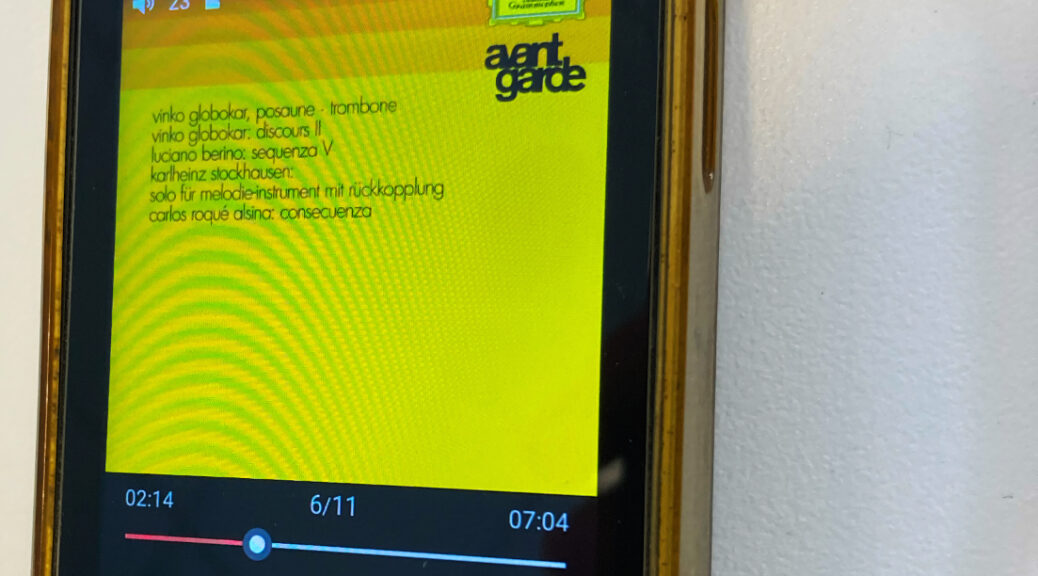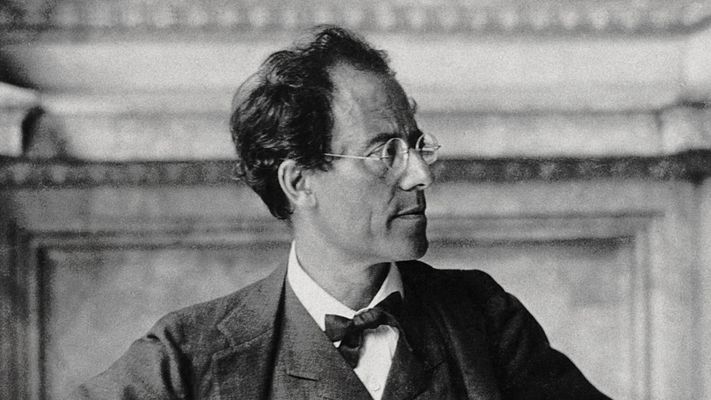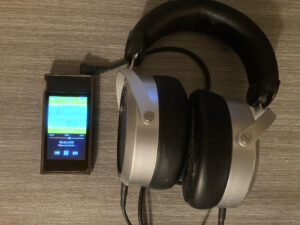 Wagner: Rienzi – Studer, Kollo, Sawallisch (Orfeo)
Wagner: Rienzi – Studer, Kollo, Sawallisch (Orfeo)
Scelsi: Bot-Ba – Marianne Schröder (hat ART)
Bertoia: Swinging Bars & Vulcans Play – Bertoia (Somnmbient)
Piston: Symphony No. 4, Schuman: Symphony No. 6 – Ormandy, Philadelphia Orchestra (Columbia)
“Today and Now” – Coleman Hawkins Quartet (Impulse!)
“Red Exposure” – Chrome (Dossier)
Fitzwilliam Virginal Book, Volume 7 – Belder (Brilliant)
Respighi: Lauda per la Natività del Signore – von Otter, Ely, Mikaela Choir (Proprius)
All posts by Gene Gaudette
Playlist for the week of Nov. 24, 2024
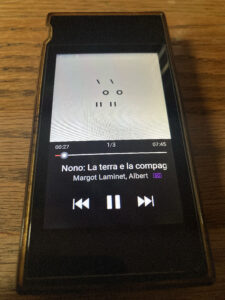 “English Music for Strings” – Collins, New Symphony Orchestra (Decca)
“English Music for Strings” – Collins, New Symphony Orchestra (Decca)
“Glass World of Annea Lockwood” (Room40, digital reissue)
Elgar: Violin Concerto – Frang (Warner)
“Beat” – King Crimson (EG)
Nono: Seguente (edition RZ)
Monk: Atlas (ECM)
Poulenc: Aubade, Les Biches (Tacchino, Prêtre) – EMI
“Liberation Music Orchestra” – Chalie Haden (Impulse!)
Johann Michael Bach, Johann Christoph Bach: Choral and Keyboard Works (Ricercar, from the “Masters of the German Baroque” big box)
#classicalmusic
#weekly #classical #playlist for 15 July 2024
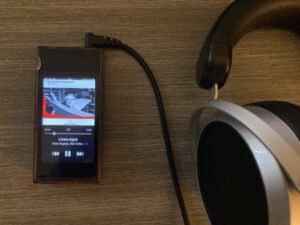 Schoenberg: Serenade Op. 24, Variations Op. 31, Bach Transcriptions – Robert Craft, 20th Century Chamber Ensemble, Philharmonia Orchestra (Naxos)
Schoenberg: Serenade Op. 24, Variations Op. 31, Bach Transcriptions – Robert Craft, 20th Century Chamber Ensemble, Philharmonia Orchestra (Naxos)
Qobuz • Apple Music • Amazon
‘Masters of Chopin’ – Ignaz Friedman, Ignace Tigerman, Severin Eisenberger (arbiter)
Apple Music
Telemann: ‘The Grand Concertos for Mixed Instruments, Volume 2’ – Michael Schneider, La Stagione Frankfurt (cpo)
Qobuz • Apple Music • Amazon
‘God’s Favorite Dog’ (Touch and Go, ripped and restored from vinyl!)
Louis Andriessen: Il Principe, Il Duce (Donemus Composers’ Voice, ripped and restored from vinyl!)
‘Xenakis in het Orgelpark’ (Orgelparkrecords)
Qobuz • Apple Music • Amazon
#weekly #classical #playlist for 8 July 2024
 Globular, Berio, Stockhausen, Roque Alsina: Music for Trombone[s] – Vinko Globokar (DG avant garde)
Globular, Berio, Stockhausen, Roque Alsina: Music for Trombone[s] – Vinko Globokar (DG avant garde)
Qobuz • Apple Music • Amazon
JC Bach: Harpsichord Sonatas – Virginia Black (CRD)
Qobuz • Apple Music • Amazon
Martinů: Piano Concerto No. 2 – Emil Lechner, Jiří Bělohlávek, Czech Philharmonic (Supraphon)
Qobuz • Apple Music
Pettersson: Symphony No. 9 – Commission, Göteborg SO (Philips, ripped and restored from vinyl!)
‘In the Tradition, Volume 2’ – Anthony Braxton et al (Steeplechase)
Qobuz • Apple Music • Amazon
‘Live at Cēsis Concert Hall’ – Martha Argerich, Gidon Kremer, Kremerata Baltica (AKKA)
Limited Edition CD
Schütz: Vocal and Choral Music – Ricercar Consort, Vox Luminis (Ricercar, from the massive, out of print “Masters of the German Baroque” CD box)
New from Toblach Ausgabe: ‘Gesualdo Renaissance’
Crossposted from Urlicht AudioVisual:
If you are a fan of Stravinsky, Varèse, and/or the Second Viennese school – Webern, Berg, and in particular Arnold Schoenberg – you likely recognize the name Robert Craft, a conductor best known as a champion of that esteemed group of composers. You may not be aware that he was also profoundly interested in renaissance- and baroque-era polyphony, particularly the music of Carlo Gesualdo.
Craft’s first pioneering recording of the Italian master’s madrigals, made before his long-term partnership with Columbia Masterworks, was made with a handful of Hollywood’s most gifted singers – including the young Marilyn Horne. The result of these independent studio sessions proved an important catalyst in the revival of interest in Gesualdo’s unique and revolutionary oeuvre, and a landmark recording at the dawn of “historically informed” early music performance practice.
Unavailable for over six decades, this recording has been restored and remastered by Urlicht AudioVisual and will be available on our sister label Toblach Ausgabe for streaming, sale on CD, and download in HD formats on February 18.
You can download the liner notes in .pdf here.
[partial and late] Playlist for the week:
[partial] Playlist for the week
“Leningrad” Reloaded
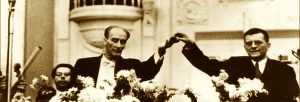 Evgeny Mravinsky — the iconic Russian conductor born to a family of Petrograd aristocrats — fared far better than most of his high-born peers during the Soviet era, rising to prominence as arguably that nation’s greatest maestro. Mravinsky was the preferred orchestral interpreter of composer Dmitri Shostakovich — until the two had an acrimonious falling out over Mravinsky’s refusal to conduct Shostakovich’s Thirteenth Symphony (“Babi Yar“), a work which included poems by dissident Soviet writer Evgeny Yevtushenko.
Evgeny Mravinsky — the iconic Russian conductor born to a family of Petrograd aristocrats — fared far better than most of his high-born peers during the Soviet era, rising to prominence as arguably that nation’s greatest maestro. Mravinsky was the preferred orchestral interpreter of composer Dmitri Shostakovich — until the two had an acrimonious falling out over Mravinsky’s refusal to conduct Shostakovich’s Thirteenth Symphony (“Babi Yar“), a work which included poems by dissident Soviet writer Evgeny Yevtushenko.
Mravinsky’s recorded legacy is fascinating for several reasons beyond the documentation of art music during the Soviet era. Mravinsky’s first sessions were committed to 78 sides in 1939, but he stopped making studio recordings in the early 1960s in a sort of “reverse Glenn Gould” decision; his legacy on record and CD is not unlike that of Sviatoslav Richter, who himself generally disliked the studio and rarely engaged in such sessions after the mid-1960s. Mravinsky’s post-studio discography, mostly with “his” Leningrad Philharmonic, is a legacy of consistently impactful performances that combine taut structural control with evocative and colorful spontaneity. Yet these same characteristics can be heard in his studio sessions which, judging from careful listening, were committed to tape in very long takes, yielding nothing in dramatic power to his live performances.
Several of Mravinsky’s recordings have (quite rightfully in this writer’s not-so-humble opinion) achieved cult status, including his studio recordings of Tchaikovsky’s Fourth, Fifth, and Sixth Symphonies for Deutsche Grammophon (recently reissued by Alto), his 1982 live recording of the Eighth Symphony of Dmitri Shostakovich, first issued on Philips (also reissued recently in an improved remastering by Alto), and a searing live performance from 1980 of Bruckner’s Ninth Symphony, originally issued by Melodiya.
One Mravinsky recording that has been a particular favorite of mine has proven elusive over the years. In many ways it is among Mravinsky’s most important recordings – that of Shostakovich’s Seventh Symphony, “Leningrad.”
The work, composed on a Bruckner-Mahler scale, depicts Leningrad (and the world) under siege by the Nazi Reich. It garnered notable broadcast performances during the war conducted by Samuil Samsoud, Arturo Toscanini, Karl Eliasberg, and Sir Henry Wood among others, and is arguably the most performed artistic “political statement” of World War II. Mravinsky made his sole recording of the work in studio with the Leningrad Philharmonic in 1953 — less than two years after William Steinberg’s recording of the Seventh with the Buffalo Symphony Orchestra on Musicraft, the work’s first commercially released recording.
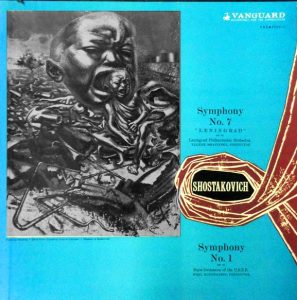 The release history of these Mravinsky sessions is confounding. It was first issued in the then-new LP format as a two-disc set in the Soviet Union on the Aprelevsky label — a precursor to Melodiya — in 1953. Four years later, it was issued for the first (and only) time on LP in the West by Vanguard Records (yes, that’s the original cover) — the result of a deal Seymour Solomon had made with Soviet authorities to release LPs by great Soviet artists of the period including Sviatoslav Richter, Mstislav Rostropovich, and David Oistrakh. At around the same time, Japanese licensee Shinsekai made the first of several limited-edition issues of the recording for the Asian market.
The release history of these Mravinsky sessions is confounding. It was first issued in the then-new LP format as a two-disc set in the Soviet Union on the Aprelevsky label — a precursor to Melodiya — in 1953. Four years later, it was issued for the first (and only) time on LP in the West by Vanguard Records (yes, that’s the original cover) — the result of a deal Seymour Solomon had made with Soviet authorities to release LPs by great Soviet artists of the period including Sviatoslav Richter, Mstislav Rostropovich, and David Oistrakh. At around the same time, Japanese licensee Shinsekai made the first of several limited-edition issues of the recording for the Asian market.
All of these LP releases were short-lived, with some remaining frustratingly elusive on the collector’s market.
During there CD era, Mravinsky’s “Leningrad” was briefly available two decades ago, for a short period, in CD format on Vanguard spin-off label Omega, Melodiya (via partnership with BMG), and an awful-sounding “pirate” Urania release.
All of the legitimate releases had audio issues, many to do with the quality of source material copies used for commercial release despite having been recorded to tape — which Soviet engineers had been using nearly half a decade before Western record labels (the Red Army had “liberated” Magnetophon tape recorders and a substantial library of broadcast tapes from Germany during the last months of World War II). While the audio is good for the era by Soviet standards, the overall quality was not state-of-the-art.
Just over a year ago, a fellow Mravinsky fan (who has requested and been granted anonymity) who shares my enthusiasm for this recording provided me with a copy in a “high definition” 24-bit transfer. The sound quality was a bit better than the various CD recordings I had heard, but sonic issues remained: overload during the loudest passages, conspicuous volume changes, intermittent pitch instability, an abundance of thunks. low-frequency noises, clicks, lighting and mains hum, and a couple of jaw-droopingly bad edits (including one that omitted half a beat of a transitional passage). All of these issues were abated or eliminated — with almost no use of broadband noise reduction save for a few segments lasting several seconds at most. My source for this recording enthusiastically endorsed releasing it commercially, and my colleagues at Entertainment One (who own the Vanguard Classics catalogue), Alto Distribution, Amped Distribution, and Musical Concepts are releasing this restored version.
Some of you may be asking why there is any reason for a recording that does not sound like something out of, say, the Mercury Living Presence catalogue to be issued in “HD” format. I can only reply by pointing out that the Berlin Philharmonic recently issued a 22-SACD collection of the legendary maestro Wilhelm Furtwängler’s wartime broadcast recordings with that orchestra in sensational and often revelatory (even though slightly sterilized) restored transfers.
Serious listeners want iconic recordings from the pre-stereo era in the best sound possible.
Preserving and restoring the legacy of recorded 20th century art music does not seem to be a priority among the major labels unless a mega-seller artist such as Heifetz or Toscanini is involved — and even then, there is often room for improvement. Independent labels and distributors with an understanding of both the importance of these significant aural documents along with the dynamics and economics of the market are proud to serve this small but intensely curious and loyal market. With the rapid technological advancement of the digital infrastructure and the growth in high-definition online sellers and lossless/HD streaming, we are just getting started.
 Evgeny Mravinsky’s recording of the Seventh Symphony of Dmitri Shostakovich is now available for HD download and streaming here, here, and here, It will be issued in CD format by Vanguard Classics during June. Accept no substitutes!
Evgeny Mravinsky’s recording of the Seventh Symphony of Dmitri Shostakovich is now available for HD download and streaming here, here, and here, It will be issued in CD format by Vanguard Classics during June. Accept no substitutes!
In search of the “authentic” Mahler style…
A century ago, Ludwig van Beethoven was by near-universal consensus the most admired composer among lovers and performers of classical music; at the time, little if any consideration was given to the issue of “authentic” performance practice. Keyboard instruments of Beethoven’s era had for the most part been discarded in favor of what we know as the modern piano; orchestral wind, brass, and percussion instruments were similarly superseded by more evolved models. Conductors of the era, including Gustav Mahler, were prone to adjust orchestration to compensate for forces larger and quite different in sound than those of Beethoven’s era.
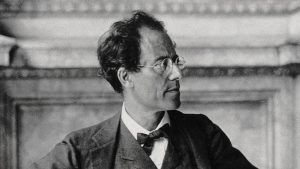 Today, there is a strong argument that Mahler occupies the pedestal that had been held by Beethoven during an era when his great champions included names such as von Bulow, Paderewski, Rachmaninoff, Weingartner, Toscanini — and, of course, Mahler himself.
Today, there is a strong argument that Mahler occupies the pedestal that had been held by Beethoven during an era when his great champions included names such as von Bulow, Paderewski, Rachmaninoff, Weingartner, Toscanini — and, of course, Mahler himself.
The fact that a small but artistically signifiant number of recordings of Mahler’s music were made during the acoustic and “shellac” (electrical pre-LP) recording eras — including several by artists who worked closely with Mahler — gives modern listeners the opportunity to hear these works as they had been sung and played during an era when, contrary to earlier assumptions, their reputation and popularity were on the rise until political and social upheaval – and war – swept Europe in the 1930s.
These early studio recordings, naturally, have given rise to speculation about whether or not it is possible to determine an “authentic” performance style for Mahler.
Several years ago, when I produced “The Music of Gustav Mahler; Issued 78s, 1903-1940” — the first comprehensive anthology of every commercially-issued Mahler 78s released between 1903 and 1940 and listed in Peter Fülöp’s exhausive Mahler discography — my intent was not only to present these recordings in the context of the era in which they were issued in the best sound possible, but to also offer informed insight into historical, technical, and artistic facts surrounding these recordings in the form of thorough liner notes authored by Sybille Werner.
The set and the accompanying notes were not conceived to answer questions about “authentic” Mahler performance practice — nor for that matter do I believe an answer to the question exists, though one can discern that there were significant artistic and interpretive characteristics unique to the era, particularly in instrumental playing. Additionally, one cannot ignore overall differences among authoritative studio recordings made by Mahler’s conducting colleagues and protégés: Bruno Walter, Willem Mengelberg, and Oskar Fried. Likewise, the voices of Leopold Demuth, Lula Mysz-Gmeiner, and Sara Charles-Cahier, three singers who had sung under Mahler’s direction, shed light not only to the composer’s music but the vocal style and tradition of Mahler’s world, along with the many other singers represented in the set.
I have in recent months received several inquiries about the future availability of the set. I have completed most of the technical work on a follow-up set that will include the remaining 78s and several important recordings issued during the early LP era, but good quality copies of two discs have proven elusive. I expect this situation to be resolved in the next few months, and am speaking with my strategic partners about a short run of the original set once the second volume is completed.
The original run of “The Music of Gustav Mahler; Issued 78s, 1903-1940” — 1000 copies — was warmly received by the press, and my distributors sold out of the set within less than two months of its release date. Used copies that turn up on eBay and Amazon command insanely high prices.
Releasing the set as a digital item through online retailers has proven problematic, despite the dogged efforts of my worldwide distributor, Alto Distribution, and my outstanding digital aggregator, Entertainment One.
Some of the major players in digital music for direct sale and download, most notably iTunes, have introduced logistical obstacles that make it next to impossible to make sets with a large number of tracks available for download or streaming.
As a result, I have decided to make the entire set available through a small-scale strategic partner for purchase in lossless download formats: Apple Lossless for iTunes users and flac for most other listeners. The original English-language liner notes and all German texts with English translations are included in .pdf format.
You can download it here.
I will leave any conclusions concerning Mahler’s “authentic” style to you, the listener.
My favorite recordings of 2017
For once in a long while, my picks are in sync with the dreaded critical consensus.
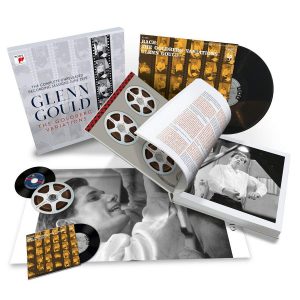 BEST REISSUE: Glenn Gould – The Goldberg Variations: The Complete Unreleased Recording Sessions June 1955 (Sony 88843014882)
BEST REISSUE: Glenn Gould – The Goldberg Variations: The Complete Unreleased Recording Sessions June 1955 (Sony 88843014882)
This particular release is admittedly not for everybody, but is highly recommended to fans of Gould, musicians (particularly those who make recordings), and lovers of recorded music — for the opportunity to be a fly on the wall and hear how the metaphorical sausage is made. Perfectionist Glenn Gould found an ideal producer in John McClure, whose subtle ability to act as coach, psychologist, and cheerleader was a major factor in the success of this recording. This was Gould’s first commercial recording, with practically all of his previous studio work having been recorded direct to acetate discs by the CBC. It should therefore come as no surprise that most of the variations chosen for the final master recording were full takes with no edits, but at a few moments you can hear the wheels turning in Gould’s head concerning the possibilities opened by tape editing.
The set includes a vinyl LP replicating the original artwork in significantly better sound than the original, and is accompanied by a beautifully-printed book of several hundred pages packed not only with enormously informative multilingual text but photographs and documentation, including information on the final edit that listeners to the entire sequence of sessions will find enormously helpful.
 BEST NEW RELEASE: “Crazy Girl Crazy” (alpha 293)
BEST NEW RELEASE: “Crazy Girl Crazy” (alpha 293)
Berio: Sequenza III for woman’s voice
Berg: Lulu-Suite, five symphonic pieces) for soprano and orchestra
Gershwin (arr. Bill Elliott and Barbara Hannigan): Girl Crazy Suite
BONUS DVD: “Music is Music” — a film directed by Mathieu Amalric
Barbara Hannigan (soprano and conductor), Ludwig Orchestra
Barbara Hannigan is a musical “triple threat”: brilliant new music singer, compelling opera star, and conductor — one of the less-than-half-dozen best women to grace the podium in my not so humble opinion (the others being Susanna Mälkki, Nathalie Stutzmann, and Sybille Werner — sorry, Mirga, you’re terrific but not quite there [yet]).
So it is no surprise that a bit of all three facets of Hannigan’s music-making can be found in this adventurous and thoroughly satisfying recording from one of the best indie labels in the world, Alpha. I won’t go into too much analytical detail other than to say this recording grabs you from the first note and doesn’t let go until the last note of Gershwin fades to silence, leaving you hungry for more (which will, according to one of my French spies, be a collaboration with Reinbert de Leeuw slated for 2018 release). The Ludwig Orchestra plays with idiomatic character, and the sound quality is detailed, excellently balanced, and “up front.” It eclipses everything else new I’ve heard this year. Just get it. But get the physical edition – the download, sadly, does not include the must-see video bonus.
